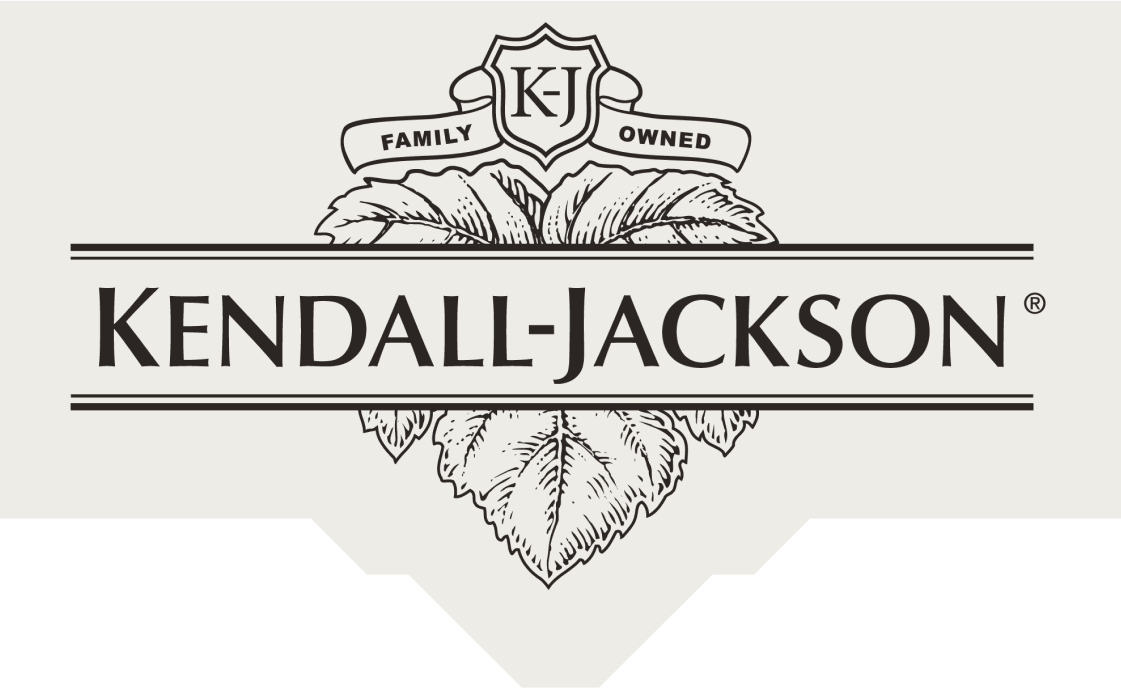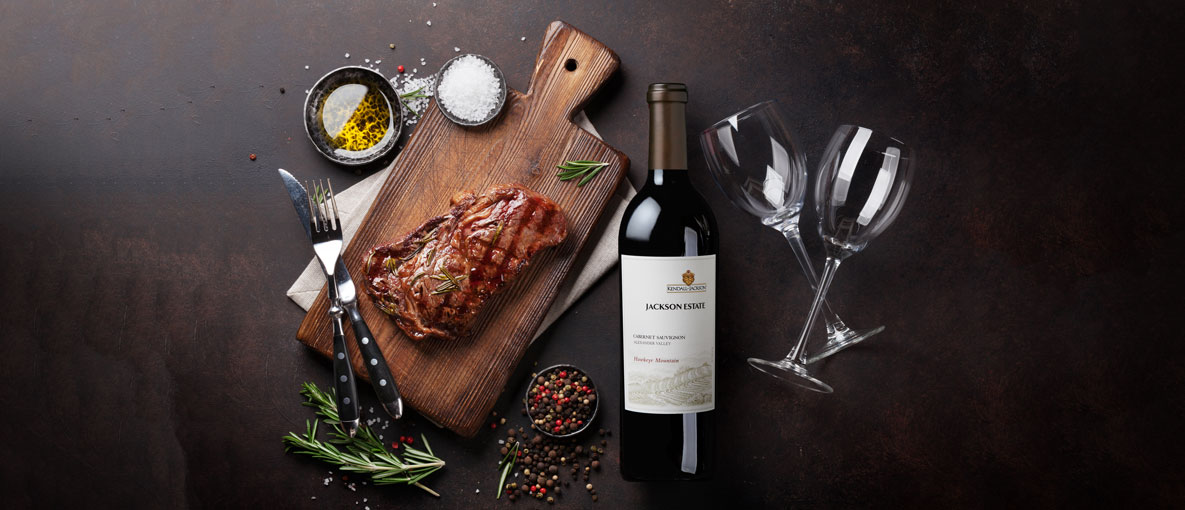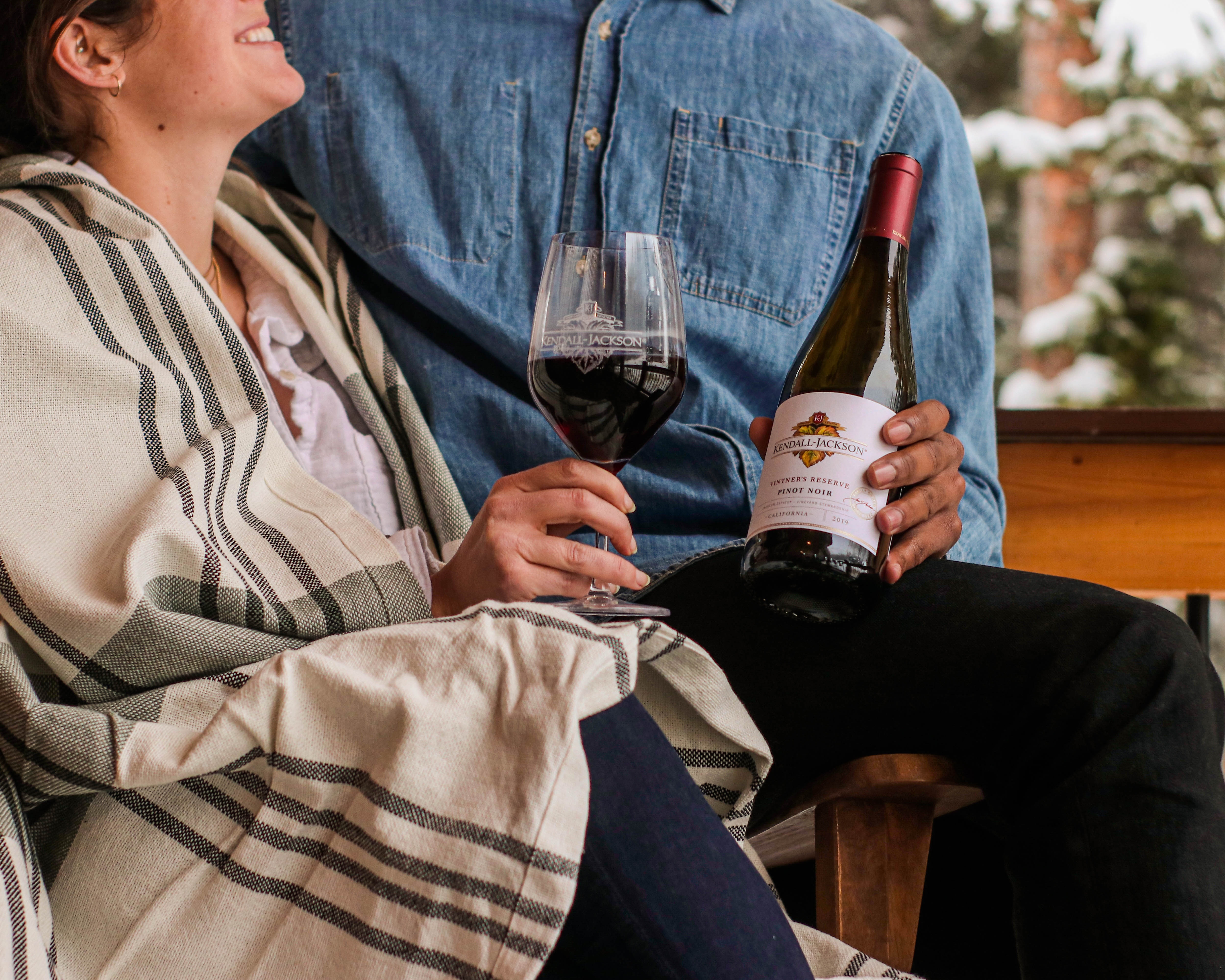When the Wind Makes the Wines: Sonoma's Petaluma Gap AVA
In the USA wine world, it’s hard to beat the excitement of the “birth” of a new American Viticultural Area, or AVA. In early January 2018, Sonoma’s Petaluma Gap became the 139th AVA in the United States. It took two years of petitioning plus filling out loads of declarations and providing all sorts of climatic proof.
WHAT DO PETALUMA GAP WINES TASTE LIKE?
Jackson Family Vineyard Manager Scott Welch possesses an impressive mental web of the many soil types, topographies, expositions and more of the vineyards in Kendall-Jackson’s portfolio. For Scott, two of Kendall-Jackson’s Jackson Estate bottlings in particular don’t resemble any other wines within this expansive range of quality-driven brands: the Petaluma Gap Pinot Noir and the single vineyard Cloud Landing Chardonnay.
Scott appreciates that the deep clays of the Petaluma Gap vineyards can resemble those of the Alexander Valley, but because of the Petaluma Gap winds (see more below), the wines have a penetrating concentration more akin to the K-J Monterey wines series. It just goes to prove that the Petaluma Gap AVA is unique within American Viticultural Areas as well as within the Kendall-Jackson portfolio of wines.
This is precisely why the Kendall-Jackson Jackson Estate Collection decided to launch its Petaluma Gap Pinot Noir – to highlight this special wine terroir. Despite the distinctiveness of Petaluma Gap Pinots, there are surprisingly few wineries making wines dedicated to this AVA. What’s not surprising is that they are all top names, like Kosta Brown, Twomey Cellars, Trombetta and Ernest Vineyards. These bottlings, however, typically start at a much higher price while the Jackson Estate Petaluma Gap Pinot Noir sells for just under $40!
A deeply defining characteristic of these wines, whether white or red, lies in the small clusters from which they are made. The region’s wind creates a chilly environment that keeps the grape clusters smaller and tighter as they try to grow. It also hardens the grape skins. Furthermore, the über cool climate helps the grapes retain acidity, which accentuates the refreshment of these wines.
Both white and red wines from the Petaluma Gap are defined by vivid acidity, structural delineation and aging potential. The Kendall-Jackson vines in the Petaluma Gap may only average seven years old now, but their wines’ impressive concentration bodes well for currently bottled wines as well as for future vintages made from older vines, which should only improve their aging potential. However, resisting them in their youth seems self-punishing as they are ready to enjoy when released onto the market.
Cloud Landing Chardonnay
This lovely white was a surprise in all of the right ways! It is layered with strikingly intense aromas of crunchy yellow apples, zesty yellow grapefruit and wet slate that slide nicely into the harmonious and lingering finish. The explosive, mouthwatering acidity gives this bracingly youthful wine lots of verve that gracefully lifts the medium-bodied and smooth mid-palate. Its cool climate origin gives it more tension than most from Sonoma, California, almost giving it an Old World (that is, European) palate feel.
Still, the Cloud Landing Chardonnay works equally well at the table as it does on its own. It will pair best with dishes that are slightly lighter and brighter than those that work with most California Chardonnays. For a vegetarian wine pairing, roasted spring vegetables with polenta and fontina would make a nice main course. Pairing this Chardonnay with fish would work nicely, too. Braised halibut with leeks and mustard would melt seamlessly on the palate with this wine!
Petaluma Gap Pinot Noir
This wine’s bright flavor profile works on the lighter end of the fruit spectrum with red and blue fruits: red plums, dark cherries and blueberries. It has hefty concentration on the palate, but it has such chiseled acidity that it feels only medium-bodied. The tannins are gracefully sculpted but firm – showing that chilly Petaluma Gap origin. It’s a wine for the table in my book. Given its youthful vigor, it benefits from decanting. A half-hour to an hour really help to coax out the wine’s earthy, minerally tones! Similar to its Chardonnay counterpart, there’s such structure here that there’s almost a European edge to the wine. However, the light, mouth-coating texture still nods to its New World origin.
Given the bright fruit flavors, I can’t help but think of incorporating fresh herbs with this Pinot Noir pairing. Rabbit with wild herbs sounds like a primo food and wine combination between its herbal component and the dense flavor of rabbit. A vegan food and wine pairing like mushroom-quinoa burgers will work nicely, too, as the Petaluma Gap Pinot Noir has the crispness to cut through the “meatiness” of the patty. Additionally, Pinot Noir and mushrooms are a classic wine and food pairing!
PETALUMA GAP CALIFORNIA WINE REGION – STEPPING BACK IN TIME
How did this all come to happen? The journey to a designated wine appellation status for this southern sector of Sonoma County that reaches down into Marin County all started long, long ago. The Petaluma Gap area has accumulated over 160 years of grape growing for winemaking. Back in day, Petaluma was a lively riverfront town that served as a shipping center in the California Gold Rush days. Historical Petaluma had everything a good wine region needed (and still needs): the right growing conditions, the means to ship – or, in those days, “export” – its wines to near-by metropolitan centers (today the destinations would be more far-flung) and a thirsty local population.
PETALUMA GAP CALIFORNIA WINE REGION – TODAY
Those early plantings on the banks of the Petaluma River gradually expanded. Today the Petaluma Gap AVA stretches from the 15-mile “gap” in the mountains on the Pacific Coast down to the San Pablo Bay. It takes only 55 minutes to arrive in the region’s namesake town of Petaluma from the heart of San Francisco. This thriving hub sits almost exactly in the heart of the new Petaluma Gap AVA.
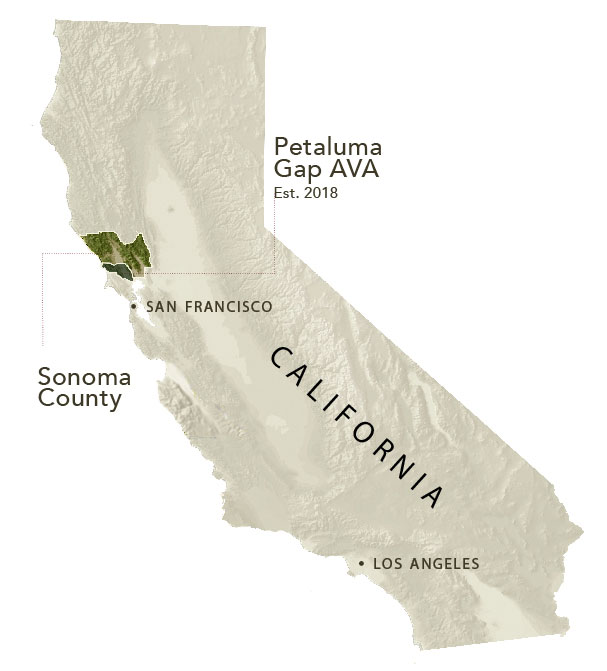
This new American AVA embraces 4,000 acres of vines in a 200,000 acre area. If that sounds like a big area even in its newly defined sense, consider that the Petaluma Gap AVA was previously part of the Sonoma Coast AVA, which today boasts 4,725 acres on its own! Clearly this Sonoma wine country AVA was primed for further delineation for its wines, even when its varietal (that is, a wine from a single grape variety) wines’ styles are made mostly from the same grapes: Pinot Noir and Chardonnay.
Indeed, Pinot Noir dominates the vineyards here, as it does throughout most of Sonoma County. Pinot Noir accounts for a whopping 75% of all Petaluma Gap grape plantings! Chardonnay follows well behind with just 13% and is rivaled by plantings of Syrah, totaling 12%. There’s a smattering of other wine grapes, too.
PETALUMA GAP WINDS
The defining influence of the Petaluma Gap wines is constant wind. All other Sonoma appellations primarily are defined by fog cover in their AVA charters. However, it is not just the east-heading winds arriving from the Pacific Ocean that define the Petaluma Gap. It is also the airflow exchange with the San Pablo Bay to the south. So in fact, there are two “gaps” where the region meets different bodies of water. That thoroughfare increases the air velocity through these vineyards.
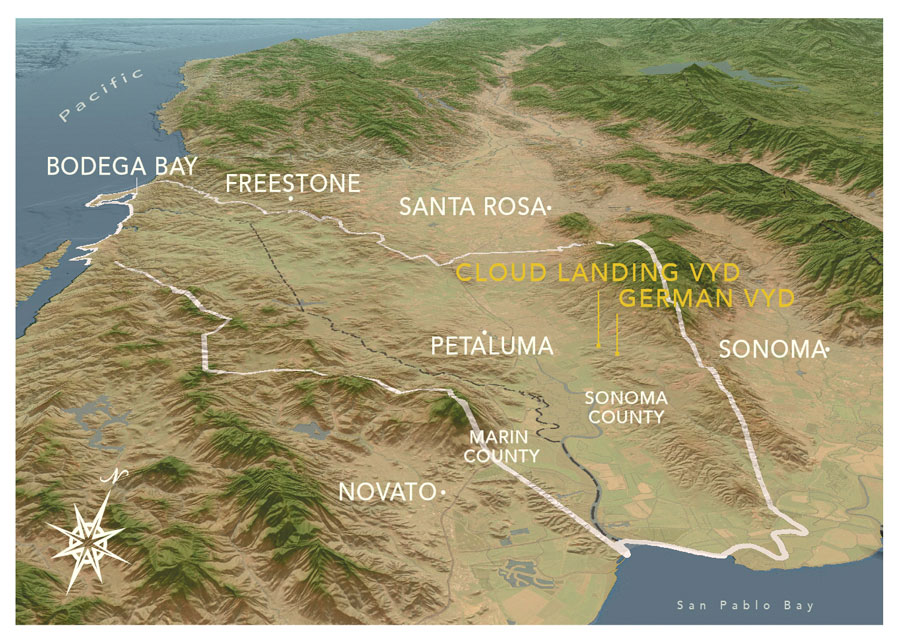
This wind flow is felt throughout the Petaluma Gap wine area all twelve months of the year. While it offers a cooling breeze to the vines on sunshine intensive days, it also delivers enough windspeed to provoke water evaporation from the vines. This can shut down their growth. Humans turn on room humidifiers to mitigate this. They provide grape vines with irrigation to help manage this water stress (see below). The overall and far more positive side of this intense and brisk wind flow is that it brings the resulting wines fruit freshness and sipping refreshment.
PETALUMA GAP AND WATER
In this new AVA, the mention of water is not just about the Pacific Ocean and/or San Pablo Bay. When it comes to grape vines and water, timing is everything. Vineyards need water during the growing season, but Sonoma County’s Petaluma Gap receives little rain during the summer. It’s not just summer’s warmth but also the constant wind (see above) that can dehydrate the vines. Conversely, when vineyard managers, winemakers and grape pickers need dry conditions for the autumn wine grape harvest, the Petaluma Gap often receives rain. While nothing can be done about the latter, resourceful wineries like Kendall-Jackson practice rainwater harvesting and precision drip irrigation to make sure the vines don’t go thirsty during their peak growing season.
Some years, plentiful winter season rainfall helps Petaluma Gap grape growers get ahead. During the 2017 growing season, Kendall-Jackson didn’t have to irrigate until July 4th! However, in dry years, the high-density vine plantings in Kendall-Jackson’s family owned vineyards in the Petaluma Gap means that the water stress on those plants is especially high. Kendall-Jackson’s Petaluma Gap vineyards are planted at 2,178 vines per acre, while Sonoma County’s average vine planting density is between 500 and 2,000 vines per acre! (By the way, the idea behind high density plantings is to provide “positive stress” on vines to encourage them to produce more flavorful wines.
VISITS TO PETALUMA GAP VINEYARDS
Most of us will virtually “visit” the Petaluma Gap vineyards by tasting the wines from its vineyards. However, when you are lucky enough to visit the Petaluma Gap vineyards in person, it is essential to be prepared. Jackson Family vineyard manager Scott Welch recommends:
- Dressing in layers: it’s chilly in the early morning and late afternoon. (It’s worth bundling up for the killer sunsets!) Temperatures in the vineyards nearest to the coast regularly experience 40-50° F swings between peak daytime and low nighttime temperatures.
- Applying sunscreen: fingertips may be tingly and frosty, but the UV rays are still there. While the morning often starts with cloud cover, as soon as it “burns off” as noon approaches, so will your complexion.
- Watching for wildlife: don’t worry! It’s small critters that you could find in Petaluma Gap vineyards, especially in the summer seasons. They’re after the grapes, not you. Birds, rabbits, gophers and badgers are all local inhabitants. They might look cute in your Instagram pictures, but they just might eat your portion of wine grapes for the year. Moreover, they don’t just eat the grapes, they also like tender vine tendrils as well as grape leaves. Scat!
- Wearing the right shoes: it goes with the “territory” of being in the countryside to watch underfoot, but it’s even better – and important – to wear the right shoes. In the Kendall-Jackson vineyards in particular, the predominant soil is Diablo Clay. It’s great for helping retain water for the vineyards (see above), but it’s slippery for both humans and vineyard machinery when it is wet.
When you “visit” the Petaluma Gap AVA – in person or just via a nice glass of wine, we hope you enjoy the uniqueness of the region and its distinctive wines!
Christy Canterbury is a Master of Wine, journalist, speaker and judge based in New York City. In 2014, she was short-listed for the Roederer Online Wine Communicator of the Year Award. Her work has been published in Decanter, Wine Enthusiast, Edible Green Mountains, Wine Searcher, Food Arts, Snooth, Beverage Media, TimAtkin.com, Civiltà del Bere, Wine Business Monthly, TASTED, Selectus Wines and in other outlets.
